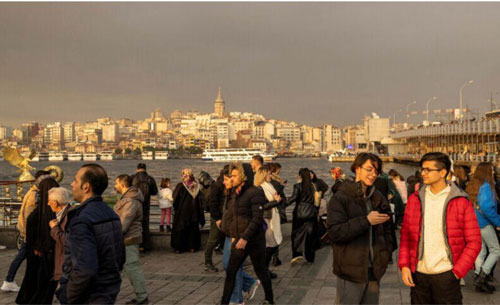Europe has seen “extreme” warm winter weather in recent days, experts have said, with 2023 already posting record temperatures for January across the region.
As temperatures rise globally because of human-caused climate change, scientists say heatwaves and spells of warmer-than-average weather are becoming more common throughout the year.
After experiencing searing summer heat and a drought unprecedented in centuries, a wave of warm weather across Europe this winter has melted the snow from ski slopes in the Alps and Pyrenees, and seen temperatures above 20 degrees Celsius even in normally-freezing central regions.
Several European countries saw record-breaking heat on New Year’s Eve and New Year’s Day, ac-cording to the World Meteorological Organisation (WMO).
Hundreds of weather stations across Europe have recorded all-time highest daily temperatures for the months of December or January, it said this week.
Freja Vamborg, Senior Scientist at Europe’s Copernicus Climate Change Service (C3S), said the current winter heatwave is an “extreme” heat event in Europe in terms of how far temperatures have devi-ated from what is expected at this time of year.
Here Vamborg answers some key questions about the heatwave: “On the 1st of January, there was strong flow of air from the southwest across the affected area, which would have brought warmer air further north and penetrated unusually far east, reaching even to Belarus. Minimal snow cover was very probably another relevant factor.”
“The circulation of any given weather situation and climate change are not two independent things. Climate change itself also has an impact on the cir-culation, and will also impact how warm those mov-ing air masses are. This is what makes it so complex to disentangle just simply a weather event, from the level to which climate change influenced such an event.”
“With increasing global temperatures, heatwaves and warm spells are becoming more frequent and intense — this is not restricted to the summer months.” “While the warming trend in Europe is on average stronger in the warmer seasons, winters are also becoming warmer as a result of global tempera-tures.” “Northern Europe has warmed more strongly in winter than in summer, while in the south the warming trend is more apparent in summer.”
“A couple of things can be mentioned for warm temperatures during the winter months. While it means less need for heating of housing and other infrastructures, low snow cover affects the winter tourism industry.” “Possible impacts on natural ecosystems, include early return from hibernation, which may have negative impacts if followed by much less mild/freezing conditions.” “The overall impact will be different depending on the longevity and intensity of the event.”—AFP









